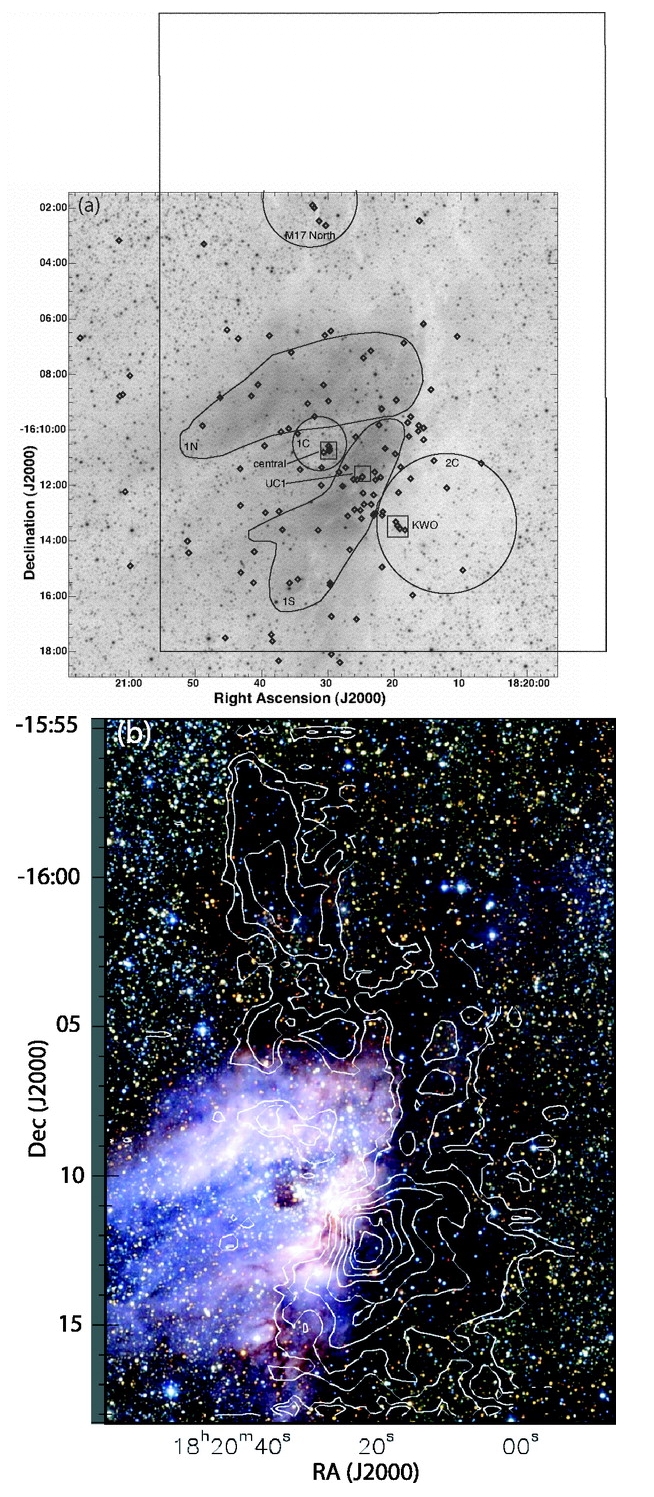| EPoS Contribution |
|
X-ray insights into the formation of stellar clusters
Eric D. Feigelson Pennsylvania State University, University Park PA, USA | |
| Observations of young stellar clusters by the Chandra X-ray Observatory reveal large populations of 0.5i<M<8 Mo Class I-II-III stars in addition to OB stars. Chandra selected samples provide rich membership lists of both revealed and obscured clusters with little contamination by Galactic field stars. They are excellent complements to infrared-excess samples which find Class 0-I-II systems. Around 20 clusters within 3 kpc are under analysis; here we feature the M 17, Rosette, W 3, and Cep B complexes. The X-ray populations provide new information relevant to the cluster formation processes. Some clusters show spherical morphology with mass segregation, while others show substructure and distributed massive stars. In one case (W3 Main), the central OB stars appear to have formed after the lower mass population. Triggered star formation by expanding HII regions is common and can be a long-lived process. Initial Mass Functions may show small differences, but are close to the standard Salpeter function. | |
 | |
| Caption: X-ray young stars in the M17 region: individual (top) and smoothed (bottom); unobscured (left) and obscured (right) | |
| Collaborators: L. K. Townsley, PSU, USA K. V. Getman, PSU, USA P. Broos, PSU, USA J. Wang, SAO CfA, USA |
Key publication
Suggested Session: Cores and Collapse, Massive Stars, Molecular Clouds |

